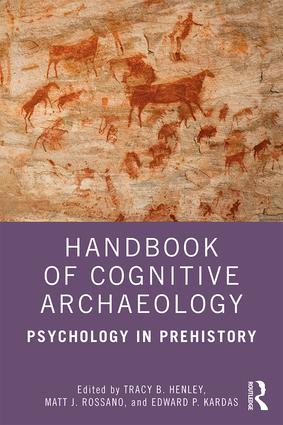For the recently published “Handbook of Cognitive Archaeology. Psychology in Prehistory”, edited by Tracy B. Henley, Matt J. Rossano, and Edward P. Kardas (Routledge 2019, [external link]), the Göbekli Tepe research project was approached to contribute a chapter on the site’s monumentality and its complex iconography – and how it could help us understand these buildings’ function, the intention behind their construction, and the effect of activities taking place there.
The volume aims at the application of cognitive archaeology, in particular to open that field to scholars across the behavioral sciences and it is our pleasure to introduce one of the key sites of the Anatolian Neolithic in this context with our paper on “Markers of ‘Psychocultural’ Change. The early-Neolithic monuments of Göbekli Tepe in southeastern Turkey” (by Oliver Dietrich, Jens Notroff, Sebastian Walter, Laura Dietrich, pp. 311-332):
“The adoption of agriculture and husbandry and the shift from hunting-and-gathering to food-producing subsistence strategies in the course of the so-called Neolithization process seems to have been accompanied (and partly even preceded) by significant mental change. The sudden appearance of a variety of symbolic depictions hints at a new “psycho-cultural” mindset and a new way of viewing the world and humankind´s role in it. The oldest yet known evidence for monumental architecture was discovered at Göbekli Tepe in southeastern Turkey, created in exactly this period. The site is interpreted as a social hub for meetings and feasts of different hunter groups of the region, and its iconographic repertoire gives ample examples of this new symbolic art. The imagery of this site in particular focuses on strong and dangerous animals, apparently emphasizing ideas of death and threat. In the course of this paper it is argued that the monuments of Göbekli Tepe could have served as arenas for orchestrated rituals necessary to create and strengthen group identity and social cohesion among the early-Neolithic hunter groups at this crucial transition phase of cultural and economic change.”
Book Details
(Detailed table of contents and introduction chapter available on publishers website.)

Recent Comments